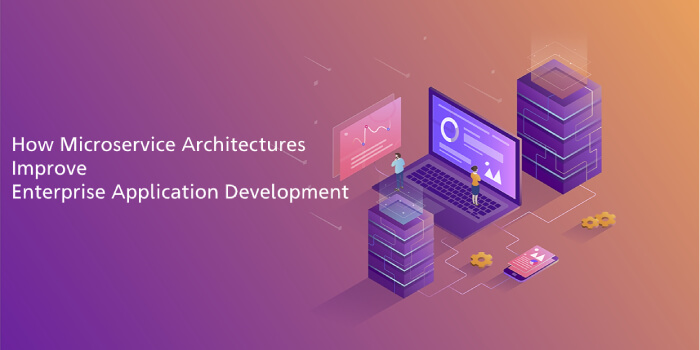
How Microservice Architectures Improve Enterprise Application Development
Microservices are small, loosely bundled distributed architectural styles that develop a software application as a set of small services. The evolution of microservice was prompted by problems associated with Monolith architecture in Java development services and related areas. The microservices architecture enables you to break a large software application into smaller components with specific roles.
The microservices architecture style enables the coordination of various systems and components. Each component has its own independent service. The popularity of microservices has spiked greatly among developers, be it a Java web application development or any other software solution.
Factors like scalability, rapid development, and independent functioning of elements play a significant role in making Java development immensely popular across industries. Additionally, the ability to choose different tools and technologies also play an important role.
Key Advantages of Using Microservices-based Development
The Power of Simplicity
Software development is being increasingly dominated by Representational State Transfer (REST). This is much lighter and simpler than Simpler Object Access Protocol. Besides, REST support JavaScript Object Notation (JSON), widely preferred by web developers worldwide. The simplicity of microservice-based development processes makes the development process faster.
Function Mapping
Microservice architecture-based development processes, such as J2EE development, don’t have any size limit. These developments mainly focus on every single function performed by different independent units.
Cloud-based Development
Microservices architecture is based on the cloud. This becomes a remarkable advantage for software developers. Capabilities provided by the cloud the environment such as auto-scaling have changed the way Java web application development is done. Before cloud technology, timeouts and slowdowns were common problems associated with software applications. The cloud technology has resolved that problem for good.
Speed & Scalability
The microservice architecture uses smaller codebase. Hence its development processes are faster and more goal-oriented. The developers can write smaller and more quality code to build a highly efficient solution. This also makes the software development process highly scalable. In fact, scalability is a major reason microservices-based development is so popular among enterprises. An increasing number of businesses are looking for enterprise applications in Java.
How to Deploy Microservices-based Solutions
The most effective way to deploy microservices-based applications is through containers. These are virtual operating system-based environments that enable developers to create isolated processes. Docker is one of the most widely used container tools. Additionally, virtual machines from internet providers like AWS can also be used for microservices deployment.
With the unprecedented evolution of microservices technologies, the competition between microservices and monolithic architectures will only intensify. Whether you are a developer or a business owner, it’s important to understand these technologies before choosing one. If you’re planning to hire Java developers, ask them about what technology they use. The performance and robustness depend so much on whether you use microservices or monolithic architecture.
FAQs:

Q. What is meant by Microservices?
Microservices are a software development technique. It’s a kind of service-oriented architecture (SOA) style. Microservice architecture arranges an application as a collection of loosely coupled services. In a microservices architecture, protocols are lightweight and services are small and specific.
Q. What is the use of Microservices?
Microservices isolate software functionality into multiple independent modules that are individually responsible for performing precisely defined and independent tasks. These modules communicate with each other through simple, universally accessible APIs.
Q. How are Microservices different from SOA?
The most prominent difference between Microservices and service-oriented architecture (SOA) is the size and scope of services. Microservices are significantly smaller in size than SOA. An SOA can be monolithic or it can have several microservices.
Q. Can we develop a web application using Java?
Yes, we can develop web applications using Java. The programming language provides support for web applications through Servlets and JSPs. A Java-based web application is a collection of dynamic resources like Servlets, JavaServer Pages, and Java classes and static resources such as HTML pages.

